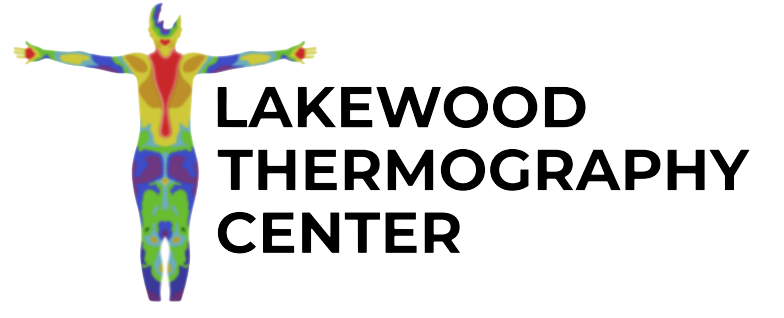MEDICAL THERMOGRAPHY RESEARCH
Thermography Research
The Index Medicus, a comprehensive index of medical scientific journal articles, references more than 800 per-reviewed breast thermography studies, in which over 250,000 women participated. Many of these studies involved very large groups of patients (from 37,000 to over 100,000) and some have followed patients for as much as 12 years. Among other conclusions, these studies found that when thermography has been added to a woman’s regular breast health checkups, a 61% increased survival rate was realized, and when used as part of a multi-model approach (clinical examination, mammography and thermography) 95% of early stage cancers will be detected. It is well known that early detection is the best defense against breast cancer and that, if treated in the earliest stages, a 95% cure rate is achieved. The “cure” is early detection.
The Cornell Study, 2008
American Journal of Surgery, 2008. American Society of Breast Surgeons, Cornell.
The single best article on breast thermography showing a remarkable 97% effectiveness in identifying malignant cancer. RESULTS: Sixty of 94 biopsies were malignant and 34 were benign. DITI identified 58 of 60 malignancies, with 97% sensitivity, 44% specificity, and 82% negative predictive value depending on the mode used. Compared to an overall risk score of 0, a score of 3 or greater was significantly more likely to be associated with malignancy.
Contemporary Analysis of Breast Thermography, Piana, Sepper
Article published in the Pan American Journal of Medical Thermology (PAJMT)
Background
Breast cancer is one of the major problems of modern oncology, and has certainly received the most attention. The World Health Organization (WHO) estimates that by 2030 there will be 26.4 million new cases of breast cancer annually worldwide, and 17 million people will die from this terrible disease.
Breast cancer is frequently found in women predominantly between the ages of 32-38 years old who are pregnant or have just given birth. According to statistics, breast cancer occurs 1 in 3000 pregnancy cases. About 3% of all cases are diagnosed during pregnancy, and 25% are seen in women less than 45 years of age. It is these women who currently do not have a method of annual screening, and in turn leave behind young families when they die. Adding a valid method of screening for these mothers will allow for a greater survival rate as well as a decrease in overall healthcare expenses. Early detection of breast cancer implies earlier treatment, therefore saving more lives, which the current system of conventional screening mammography has not achieved.
Earlier diagnosis will aid in decreasing the cost of overall healthcare in several areas. First, the number of full radical mastectomies will be reduced and more lumpectomies will be performed. This will cut down on the cost of not only the hospitalization stay, but the time of disability. There would be less reconstructive procedures required as breast integrity can be maintained. Finally, the need for costly chemotherapy could be lessened in the absence of lymph node involvement.
Evaluation of digital infra-red thermal imaging as an adjunctive screening method for breast carcinoma: a pilot study.
This study followed 1008 women ages 20-60 years old who had not been previously diagnosed with breast cancer. They used thermal imaging technology on all of these women and found elevated delta-t temperature readings over 2.5 in 49 of the women. These women underwent additional clinical testing and 41 of the 49 who had delta-t measurements equal to or greater than 3 were confirmed to have cancer of the breast. The remaining 8 women had delta-t readings between 2.5 and 3 and were shown to have fibrocystic breast disease or were lactating mothers. Given these results, thermal imaging of the breast showed sensitivity of 97.6%, specificity of 99.17%, positive predictive value 83.67% and negative predictive value 99.89% in this study. The study concluded that “Based on the results of this study involving 1008 subjects for screening of breast cancer, thermography turns out to be a very useful tool for screening. Because it is non-contact, pain-free, radiation free and comparatively portable it can be used in as a proactive technique for detection of breast carcinoma.”
Infrared Imaging of the Breast – An Overview
Chapter 25 in the Biomedical Engineering Handbook: Medical Devices and Systems
The use of infrared imaging in health care is not a recent phenomenon. Its utilization in breast screening, however, is seeing renewed interest. This attention is fueled by research that clearly demonstrates the value of this procedure and the tremendous impact it has on the mortality of breast cancer.
Infrared imaging of the breast has undergone extensive research since the late 1950s. Over 800 papers can be found in the indexed medical literature. In this database, well over 300,000 women have been included as study participants. The number of participants in many studies are very large and range from 10,000 to 85,000 women. Some of these studies have followed patients up to 12 years in order to establish the technology’s ability as a risk marker.
With strict standardized interpretation protocols having been established for over 15 years, infrared imaging of the breast has obtained an average sensitivity and specificity of 90%. As a future risk indicator for breast cancer, a persistent abnormal thermogram caries a 22 times higher risk and is 10 times more significant than a first order family history of the disease. Studies clearly show that an abnormal infrared image is the single most important risk marker for the existence of or future development of breast cancer.

